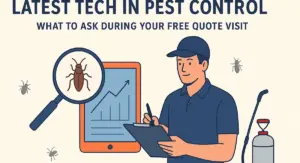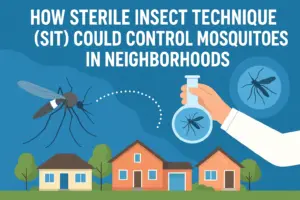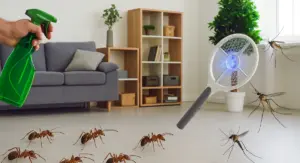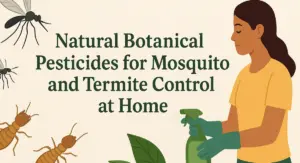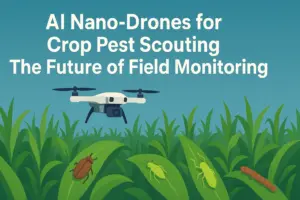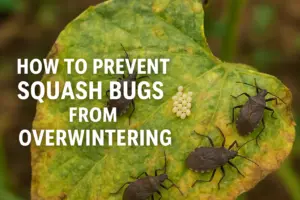Pest control treatments are an important part of maintaining a healthy environment at home or in a business space. Whether you’re dealing with termites, cockroaches, bed bugs, or rodents, preparation and follow-up actions are just as important as the treatment itself.
Knowing what to do before and after pest control tips helps ensure the process is effective and safe for everyone.
Why Preparation and Aftercare Matter
Treatments are only as effective as the care that surrounds them. If you don’t prepare properly, pests might hide or return. If you don’t follow up correctly, you might reduce the results of the service or even create health risks.
Here’s a full guide to what you should do before and after pest control.
Before Pest Control: Key Steps to Prepare
1. Communicate With the Pest Control Company
Before anything else, speak directly with your pest control service provider. They will give you specific instructions based on the type of treatment. Different pests require different methods and precautions.
Some questions to ask:
- What kind of pest treatment will be used?
- Is it safe for children or pets?
- How long will the area need to be vacated?
- Do I need to remove food or cover furniture?
Knowing the answers ahead of time helps prevent last-minute issues.
2. Clean Your Home or Workspace
A clean space allows pest control professionals to access problem areas easily. It also reduces pest hiding spots.
Tasks to do:
- Vacuum and mop floors.
- Wipe down counters.
- Remove garbage.
- Declutter baseboards and under furniture.
Avoid deep cleaning immediately before treatment, as some cleaning agents can interfere with pest control chemicals. Instead, do it a day before.
3. Store Food and Utensils Safely
Pesticides should never come into contact with food or kitchen tools.
Here’s what you should do:
- Store dry food in airtight containers.
- Empty your refrigerator of exposed items.
- Remove or cover dishes and utensils.
- If you have a pantry, seal it off if possible.
4. Protect Pets and Indoor Plants
Pets are sensitive to chemicals. Even if a treatment is labeled “pet-safe,” it’s better to err on the side of caution.
Steps to take:
- Remove pets from the area during treatment.
- Cover aquariums and switch off air pumps.
- Place houseplants outdoors or cover them with plastic.
5. Clear Access to Problem Areas
Technicians need access to areas where pests hide. Make sure these spots are free of obstructions.
Move items away from:
- Baseboards
- Sinks and plumbing fixtures
- Behind appliances
- Cracks and wall corners
This helps the team treat effectively and inspect all possible infestation zones.
After Pest Control: What You Should Do Next
Once the treatment is completed, your job isn’t over. Proper follow-up helps maximize the impact of pest control and maintain safety.
1. Wait Before Re-Entering
Pest control professionals usually tell you how long you should wait before going back inside. This can range from a few hours to longer, depending on the chemicals used.
Always follow their timing exactly. Entering too soon can expose you to chemical residue.
2. Don’t Clean Treated Areas Right Away
While cleaning is important before pest control, aftercare is different. You might be tempted to mop or wipe everything down, but this can reduce the treatment’s effectiveness.
What to do:
- Avoid wet cleaning for 5–7 days unless advised otherwise.
- Let sprays and powders settle and work on pests.
- Clean only areas not treated (e.g., dining tables).
3. Ventilate if Advised
Once it’s safe to re-enter, open windows and doors to air out the space. Some treatments leave a mild odor that ventilation can clear.
If fogging or fumigation was used, ventilation becomes even more important.
4. Monitor for Pest Activity
It’s common to still see pests for a few days after treatment. These are often pests that have been affected and are in the process of dying.
Here’s what to watch for:
- Increase in dead insects
- Pest movement in unusual areas
- Droppings or egg sacs
Keep track of the activity. This helps if follow-up treatment is needed.
5. Seal Entry Points
Prevent future infestations by blocking the paths pests used to get in.
Check and seal:
- Gaps around doors and windows
- Cracks in walls or flooring
- Openings near plumbing or cables
Caulking, weather stripping, and wire mesh can be effective tools here.
6. Dispose of Contaminated Items
If any food, fabrics, or items were exposed during the process, it’s best to discard them. Even low-toxicity products can be harmful if ingested or absorbed through the skin.
Don’t risk contamination, when in doubt, throw it out.
7. Schedule Follow-Up Appointments
Some pest problems require more than one visit. For example:
- Termite control may need periodic inspections.
- Bed bugs might need two or more treatments.
- Rodents may return if entry points aren’t secured.
Ask your provider for a recommended timeline for reinspection or further treatment.
Additional Tips for Specific Pest Types
For Cockroach Control:
- Don’t leave dirty dishes overnight.
- Keep food sealed and dry.
- Empty garbage daily.
For Bed Bug Treatment:
- Wash linens in hot water.
- Use a mattress encasement.
- Avoid moving infested furniture to other rooms.
For Rodent Control:
- Store food off the floor.
- Use traps in unsealed areas.
- Remove nesting material like paper or fabric.
Final Thoughts
Pest control is not just about getting rid of bugs or rodents. It’s a process that involves preparation, treatment, and follow-through. Whether you’re a homeowner, a tenant, or running a business, your role is key in making pest treatments effective.
By taking the right steps before and after pest control, you help create a safer and longer-lasting pest-free environment. Small actions like sealing cracks or properly storing food can prevent reinfestation and reduce future costs.
Remember: Effective pest management is a team effort between you and your pest control professional.




